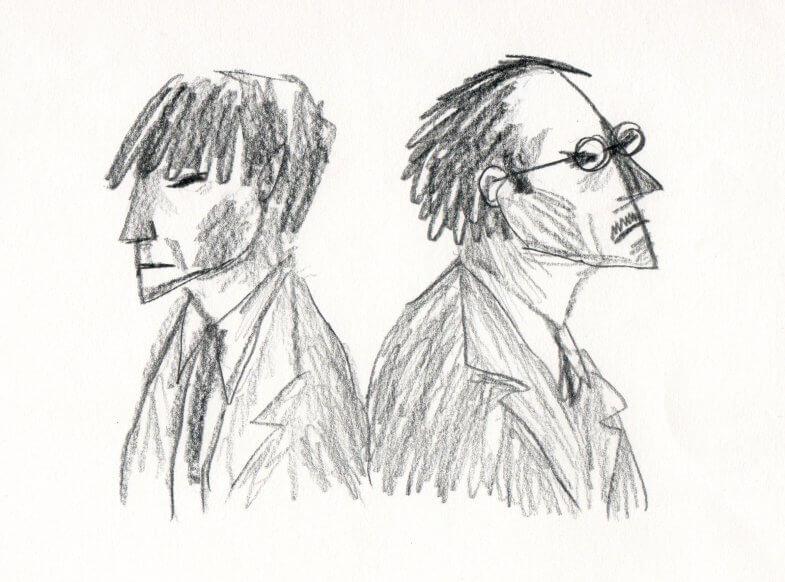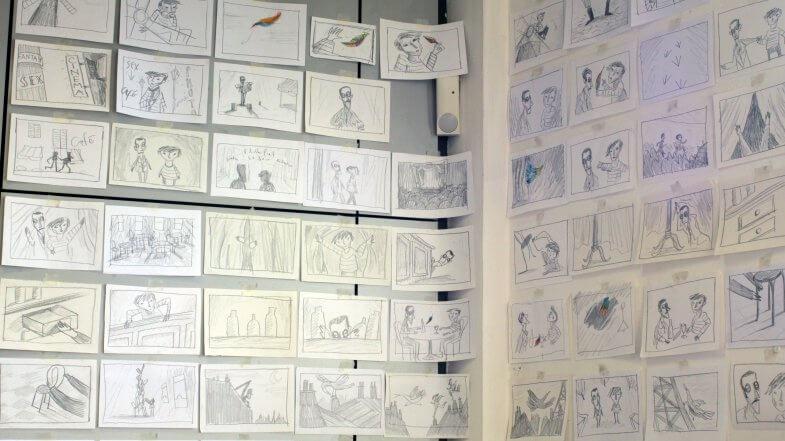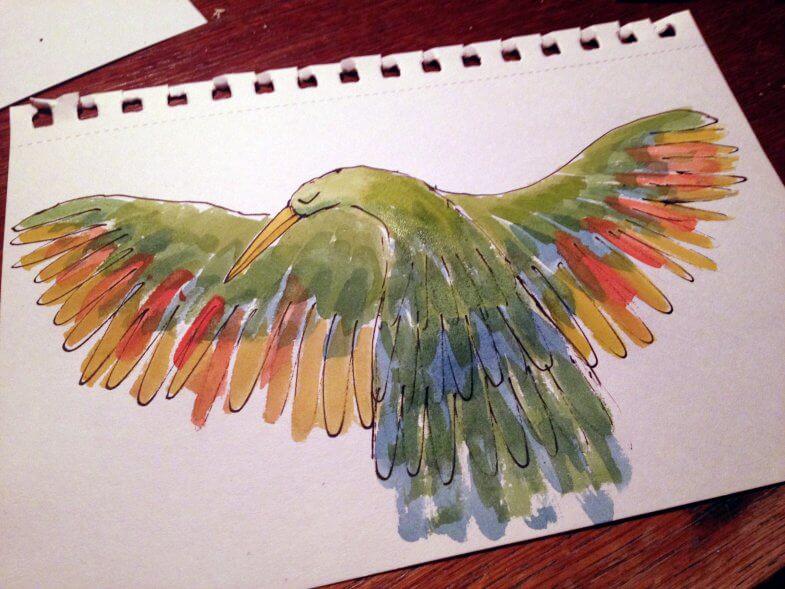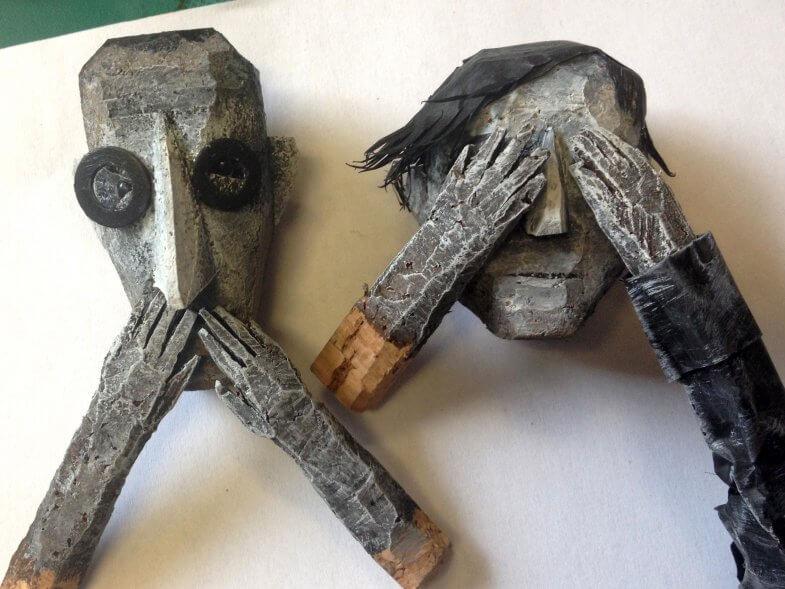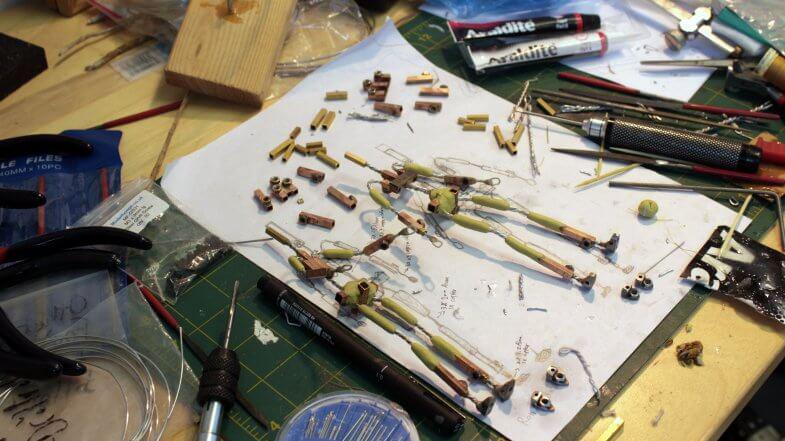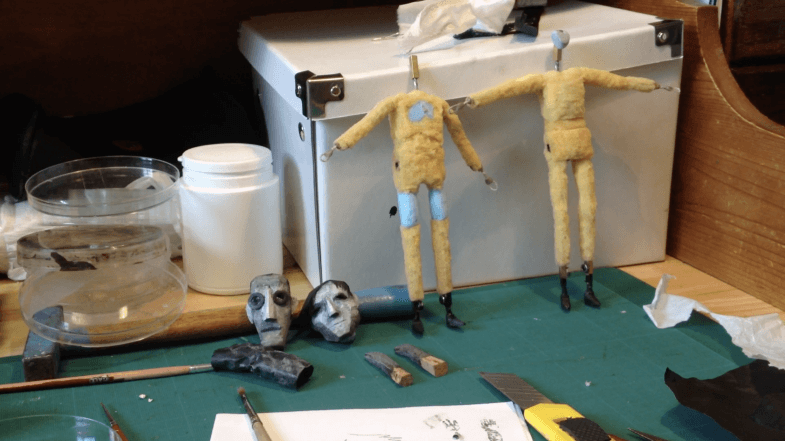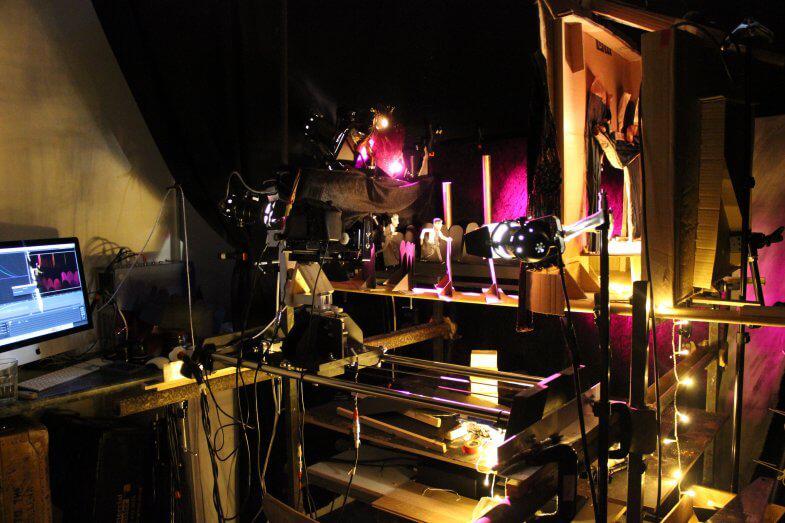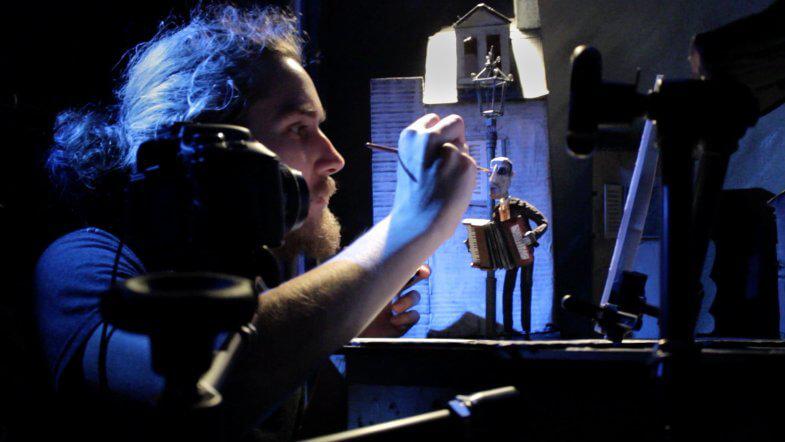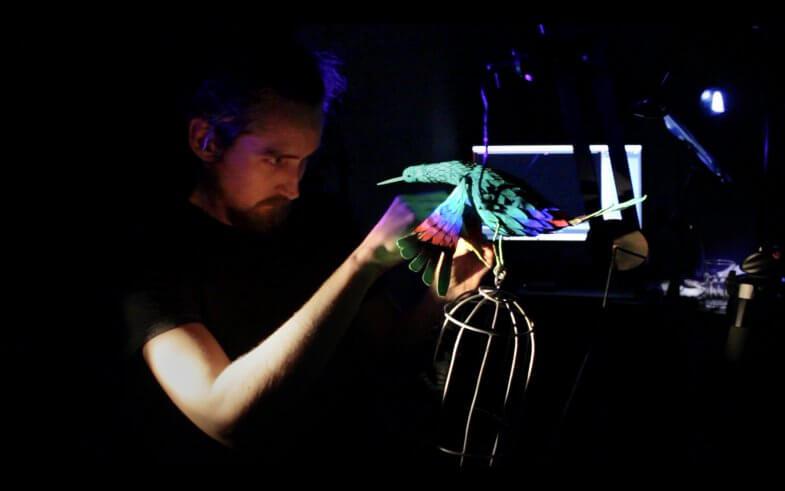Joseph Wallace on the Making of ‘Edith Piaf Said it Better Than Me’
For their latest album Hippopotamus, the Californian sibling duo Sparks collaborated with Joseph Wallace, a BAFTA-nominated UK stop-motion animator, to create a music video for their single Edith Piaf (Said it Better Than Me). Joseph, whose previous work includes the stunning James music video Dear John, had made use of his unique style of stop-motion puppetry to create a stunning, fantastical chase through a nocturnal Parisian cityscape. The music video has been well-received by critics and fans like, with the duo themselves describing it as ‘perhaps Sparks’ best video ever’.
Produced over an intense six-week period, the stop-motion animation features Joseph’s distinctive puppets against gorgeous, atmospherically-painted backgrounds, animated by Roos Mattaar, Aiden Whittam and Joseph himself. For the curious, Joseph has also produced a brilliant behind the scenes video, in which he leads Sparks through his studio. We reached out to Joseph for an interview and learnt more about the creative process which led to this great collaboration.
What first led you towards embarking on this project? Were you already a fan of Sparks beforehand?
The project came through the production company Cardel who I’m represented by. They sent over a couple of briefs, Piaf was the first one I pitched on and my treatment struck a chord with the band so away we went. I knew a handful of Sparks tracks but I wasn’t intimate with the entire back catalogue so it was interesting to delve into that as part of the research for the project, which was important because Ron and Russell (the brothers from the band) appear, in puppet form, in the video. I wanted to convey a sense of their character and personalities in the film so I watched a lot of their past videos during the process to inform the animation. They’re very creative individuals, very knowledgable and interested in the artistic process. They actually went to film school originally and we had an affinity in terms of references and French directors that we admired.
You’ve mentioned that Parisian culture was an inspiration for this video. Were there any other creative influences at work?
There weren’t too many direct artistic inspirations as the project was so fast paced so the approach was more instinctive. The main aim for me was trying to distill the notion and atmosphere of Paris into a rich metaphorical world for the brothers to exist in. I wanted the Paris we see in the video to be Piaf’s Paris, a Paris at the beginning of the twentieth century. This came from a sense of nostalgia in the song but also the reference to Piaf and Montparnasse, which was a busy night spot for Piaf, Picasso, Cocteau, Satie and a whole host of other renowned international artists who flocked there in the early 1900s. We looked at lots of images from that period and I tried to find iconic elements of design and architecture that we could use in the video to immediately help geographically place viewers. Another element that informed the video was looking in detail at the cinematography of Jean-Pierre Jeunet, whose work I’ve always loved. For this video I really wanted to create a dynamic camera language to tell the story and take the viewer from one location to the next that would draw on the energy of the track.
During the music video’s production, was there a lot of creative dialogue between you and Sparks – or was their song more of a starting point for your own ideas?
The initial brief was quite open, they just had specific points about the meaning of the song; that it’s not about someone who regrets nothing in the way that Piaf did, due to a full life and a conviction of choices, but more that the character regrets nothing because they lived a very timid, unadventurous life. So I took that sentiment and drew on certain images from the lyrics to create a concept which works as a visual metaphor for the meaning of the song. I had a conference call at the beginning of the process with Ron and Russell where we talked about ideas and the emotion of the song and the brothers were incredibly generous creatively and had a huge amount of trust in my vision from what I had outlined in my treatment. We sent some images back and forth so they were kept in the loop as the piece progressed but I was really able to follow my vision without creative interference which I always feel makes for a stronger, bolder and more effective outcome. ‘Edith Piaf’ is very different to other videos the band have had in the past but I’m humbled by the responses from Sparks fans.
Can you talk us through the creative team with whom you worked on the video?
Many of my regular collaborators were busy when I was crewing up so it was a mostly new team of artists for me which brought a fresh dynamic. There were only two of us full time, myself and Roos Mattaar who made the puppets with me and then stayed on to animate. Aiden Whittam made a great deal of the sets and also animated. The whole piece was animated by the three of us swapping between puppets and set ups, there was only one bird puppet but we made duplicates of the Ron and Russell puppets so that we were all able to shoot at the same time. Halfway through the process my (tiny) studio was filled with six people when I had Katrina Hood, Heather Colbert and Mary Murphy also join to help create all of the sets and décors as there were are so many locations that had to be made in a small amount of time. I was really impressed by how everyone really understood and got on board with my, often unconventional, methodologies. Everyone threw themselves into the project and realised the kind of texture and stylisation that I was looking for. Then lastly, Hungarian animator Milán Kopasz helped out with the post production. Due to all of the running, falling and flying in the video there was a lot of rig removal and retouching to be done so I sent out a lot of shots to Milán in Budapest, who I’d worked with on the Dear John video for James, and he cleaned up the majority of those effects shots which was a blessing as it meant I could focus on assembling the edit in between animating.
You’re an experienced director and stop-motion animator. Did you encounter any new challenges during this project?
Every project I do I try to push myself to develop my craft further and challenge myself creatively in some way. The weight of the risk that comes with experimentation keeps me on my toes. I’d made, or had others make, costumes for my films in the past but I wasn’t happy with the way the initial tests on the Piaf video turned out. In the end we went through about three iterations of costumes with different materials and processes. It was complicated due to the fact the puppets are fairly small in order to have a sense of scale in the sets, so it was very meticulous putting the miniature costumes together. In the end we used a combination of different materials from fabric to paper to create the outfits and the details of Ron’s suit. Another new aspect on this project was working with a motion control camera rig that was lent to me by Simon Tytherleigh who had built it from scratch himself. I’m a huge believer in the power of physical camera moves in stop motion and have used them throughout the puppet animations I’ve made but this was my first experience of running a motion control unit with four axes totally automated through Dragonframe. It took a bit of time to get my head around the mathematics of it but in the end I was able to create some really cinematic moments like the rooftop chase sequence and the shot where the camera swoops back to reveal the mountain of chairs in the cafe.
Do you have any advice for fellow animators working with limited time or budget? Have you found any creative solutions during your own productions that you’re particularly proud of?
I think one of the main things is to trust your instinct. When schedules are tight there’s no time to second guess yourself or ponder on things for too long, you really have to let your imagination take it’s course and keep making creative decisions as you go along. It’s also good to keep assessing the storytelling and images as you go along and to be economic; if something isn’t serving the vision or could be just as effective in a more simple way, find the most direct way of conveying the emotion. Other than that it’s just about production management; planning when things should happen by and making sure no one’s ever waiting around. We made the whole video in six weeks so it was incredibly tight, around three weeks of concept, storyboard, animatic, puppets, sets and then three weeks of animation and post.
The music video ends on a bit of a cliffhanger. Will we ever get to find out the fate of these two unfortunate brothers?
Well, the brothers do mention a sequel in the Behind The Scenes film so who knows! I wanted the whole piece to operate as a metaphor and to have different levels of meaning so viewers can take it as face value but then if they dive a little deeper there’s the analogy of the bird in relation to the meaning of the song. For me there’s a sense of hope at the end with the bird returning to carry the brothers off. I was almost worried the real brothers, Ron and Russell, might perceive the end of the video to be too bleak but they really liked the tone and the ambiguity of it. In fact, their reaction to the video has been incredibly humbling, they had it screened at the launch for the new album at the Institute of Contemporary Arts in London and I created an installation of the puppets and sets for the night. We’ve now actually starting talking about developing a project together after the Piaf video opened their eyes to the possibility of puppet animation. It’s early days but watch this space!
See more of Joseph Wallace’s work at josephwallace.co.uk
Find Sparks online at allsparks.com


